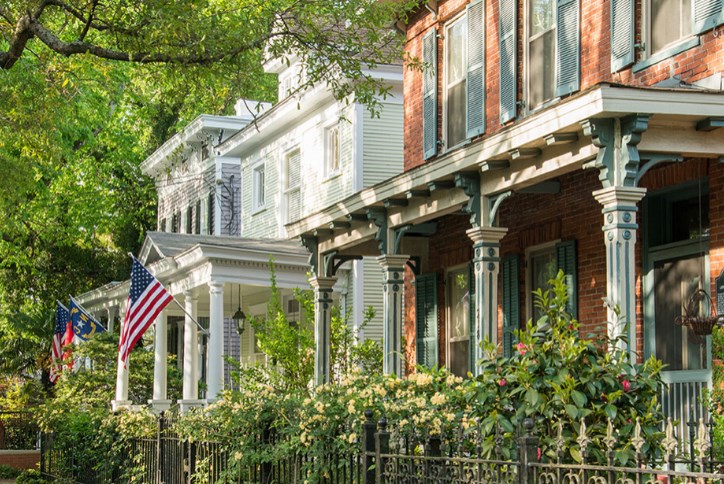
17 April . 2020
Historic Homes of Wilmington you can Explore from your Couch
There are many unique features of Wilmington that add to it’s singular charm: One of the leading North Carolina cities for local breweries, a focus and love for small local businesses that include restaurants and shops, and numerous beaches each with their own unique flair help make Wilmington special. But one of the many things to love about Wilmington that people look forward to when they visit or move to the area are the historic homes spanning back to the 18th century. Although not all of Wilmington’s historic homes are open to the public regularly and those that typically function as museums are currently closed, we’re here to help give you some insight into the antiquated sites you should visit in the future and helpful links that give you an inside look at these historic homes from the comfort of your couch.
One of the most famous and oldest houses in the Lower Cape Fear region is the Burgwin-Wright House located at 224 Market Street in Historic Downtown Wilmington. Constructed in 1770 in Georgian architectural style, this home was originally the townhome for John Burgwin and was built on the ballast stone walls of the former city jail which was constructed ca. 1744. Burgwin served as a city magistrate, clerk of the superior court of justices, master of the high court of chancery, and as treasury official and secretary under Royal Governor Dobbs and Tryon. The home was later rented in 1775 and eventually purchased by the Wright family in 1799. It was sold once more in 1869 and occupied until being transferred to the Wilmington Savings & Trust Co. and eventually purchased by the Colonial Dames of America and converted into an historical landmark and museum.
https://www.youtube.com/watch?v=UZm_YQCCG_M
The Latimer House is another historic home open to the public as a museum of the Victorian Era. Built by Zebulon Latimer and his wife Elizabeth Savage Latimer in 1852, this home is constructed in an Italianate Revival architectural style. The Latimer family gained their wealth through the harvesting of naval stores and the home remained in the family for three generations. In 1963 the Lower Cape Fear Historical Society, Inc. purchased the home as their headquarters and was eventually transformed into a museum. This unique Victorian Era home, along with several members of the Latimer family, is depicted in The Conversation, a painting by Elisabeth Augusta Chant, who rented a room in the Latimer House in 1930 while attempting to establish an artist colony in the city of Wilmington. Many of the furnishings depicted in her painting are still on display in the home today.
https://www.youtube.com/watch?v=gXl03ARFjXI
The Bellamy Mansion, located at 5th and Market Streets in Historic Downtown Wilmington is another of the famous museum trio. This home is a representation of life during the Antebellum Era, constructed in 1861 by Dr. John D. Bellamy for his wife Eliza Bellamy and their nine children. Dr. Bellamy, despite having been a practicing physician for many years, gained the majority of his wealth through the operation of two plantations, one dedicated for the growth and harvest of exportable produce, the other plantation was dedicated to the harvest of naval stores which constituted the bulk of Dr. Bellamy’s wealth. The Bellamy Mansion was occupied by Union soldiers during the Civil War, eventually returned back to the Bellamy family, occupied by Bellamy family members until 1946, owned by descendants of the original Bellamy family until ca. 1990 when it was donated to Preservation North Carolina to be restored and opened to the public as a museum in 1994.
